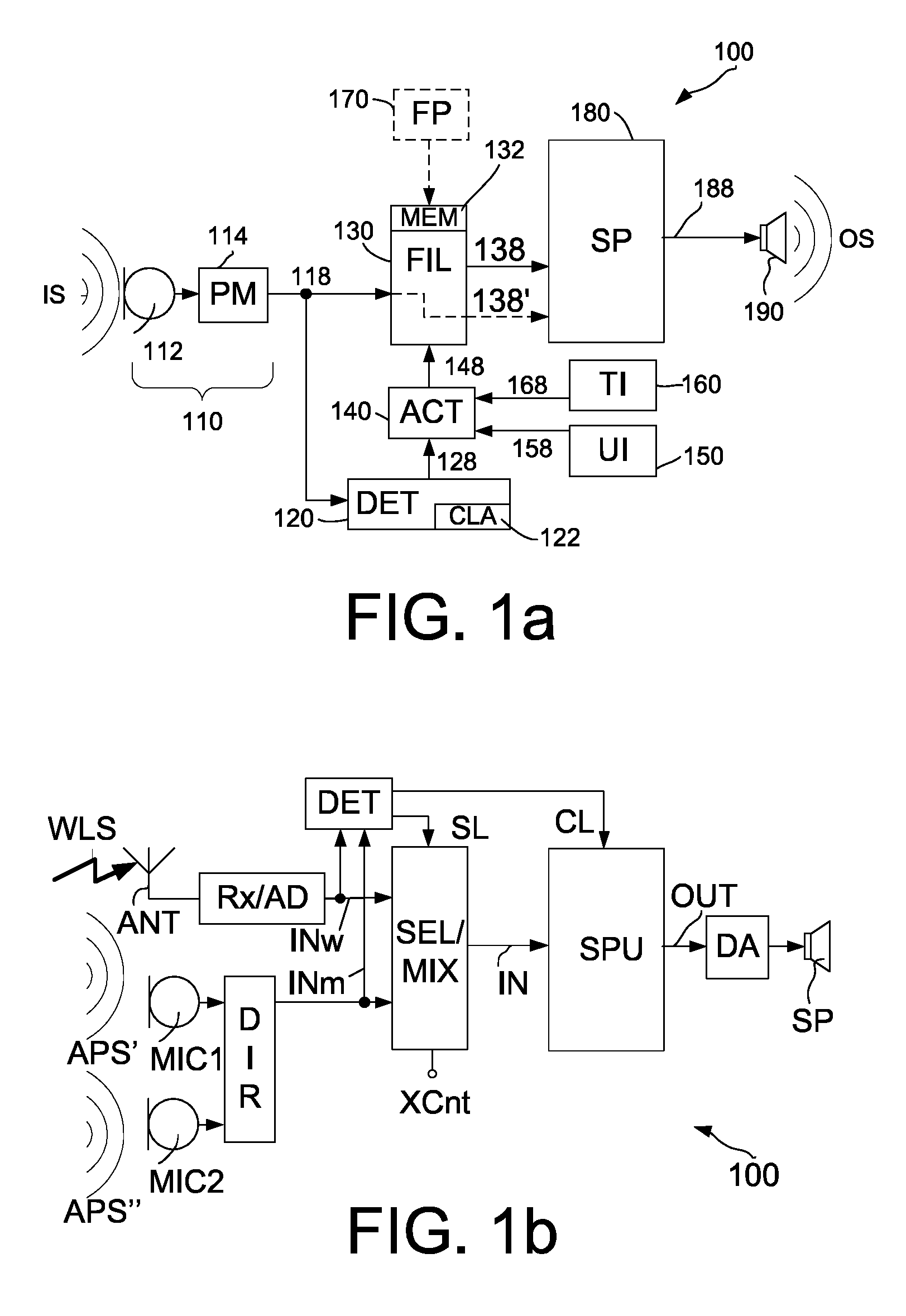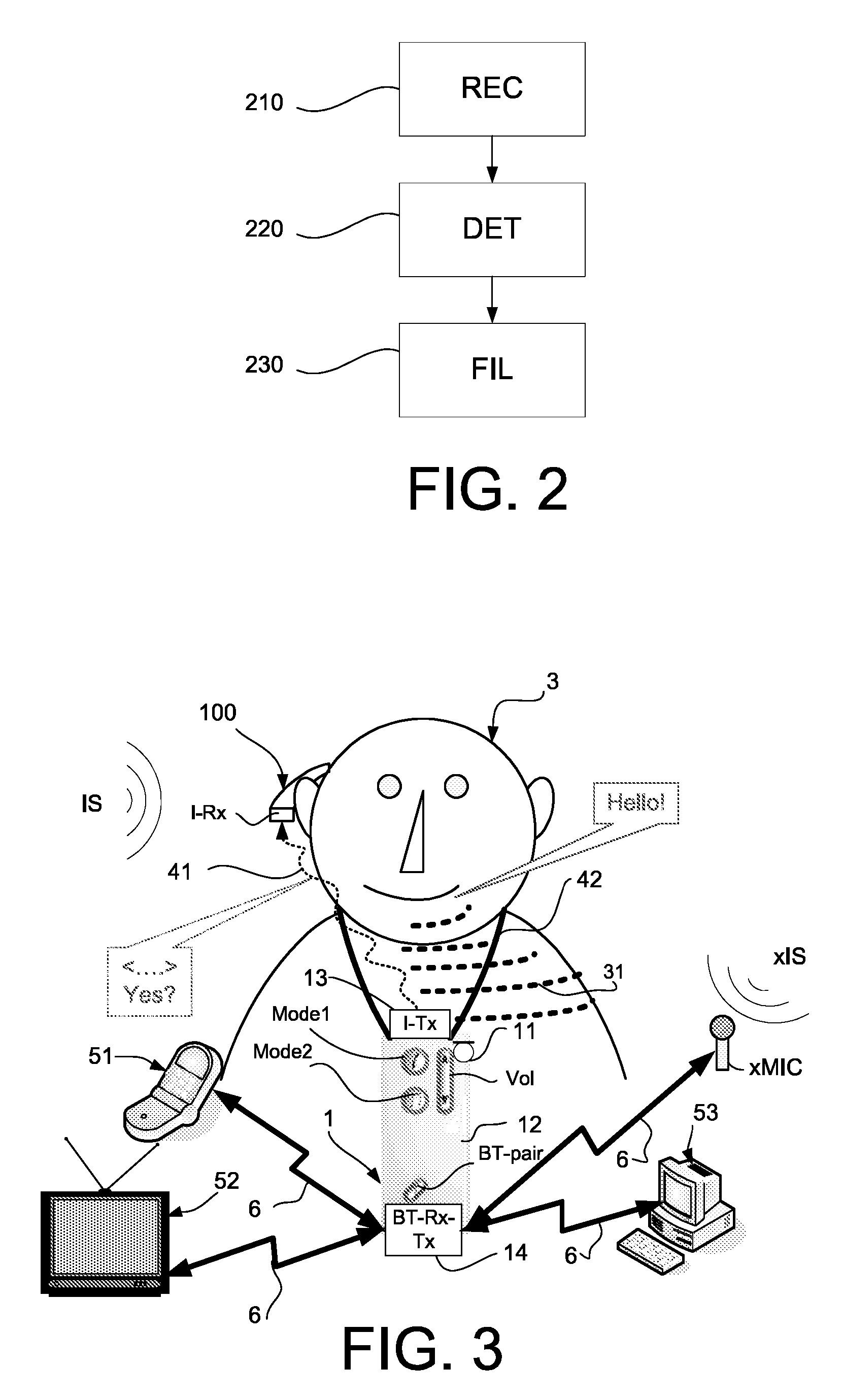Diminishing tinnitus loudness by hearing instrument treatment
a technology of hearing instruments and loudness, applied in the field of listening devices, can solve the problems of tinnitus keeping on bothering the hearing impaired person, the tinnitus not being healed by the signal, etc., and achieve the effect of harming the intelligibility of the signal
- Summary
- Abstract
- Description
- Claims
- Application Information
AI Technical Summary
Benefits of technology
Problems solved by technology
Method used
Image
Examples
Embodiment Construction
[0042]FIG. 1 schematically shows embodiments of a listening device 100 in accordance with the first aspect of the invention. The listening device 100 is designed for a hearing impaired person being subjected to a tinnitus at a tinnitus frequency range. It shall assist in sustainably reduce loudness of a tinnitus noise bothering the hearing impaired person.
[0043]In the embodiment of a listening device in FIG. 1a the input transducer 110 comprises a microphone receiving an input sound IS and converting it to an electric input signal 118. The listening device further comprises an output transducer 190 in the form of a speaker for converting an electric signal 188 to an output sound OS.
[0044]Besides conventional components like an input transducer 110 with a microphone 112 and processing means 114 and a signal processor 180 coupled to an output transducer 190, the listening device 100 comprises a detector 120 that is coupled to the input transducer 110 and configured to determine, wheth...
PUM
 Login to View More
Login to View More Abstract
Description
Claims
Application Information
 Login to View More
Login to View More - R&D
- Intellectual Property
- Life Sciences
- Materials
- Tech Scout
- Unparalleled Data Quality
- Higher Quality Content
- 60% Fewer Hallucinations
Browse by: Latest US Patents, China's latest patents, Technical Efficacy Thesaurus, Application Domain, Technology Topic, Popular Technical Reports.
© 2025 PatSnap. All rights reserved.Legal|Privacy policy|Modern Slavery Act Transparency Statement|Sitemap|About US| Contact US: help@patsnap.com



